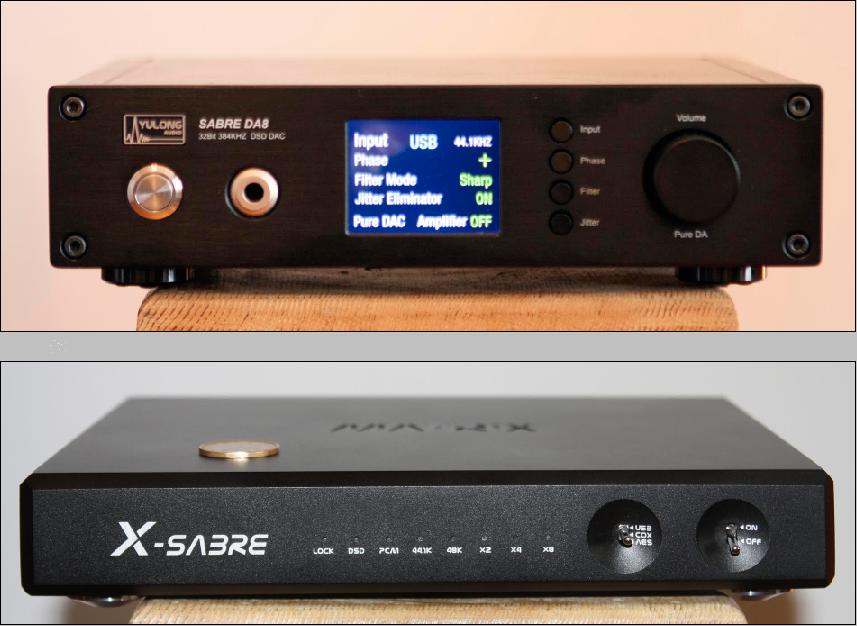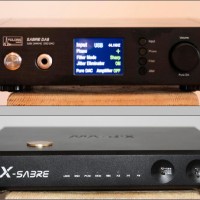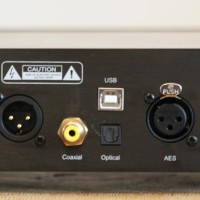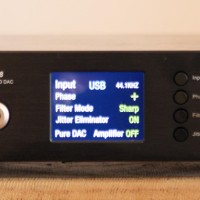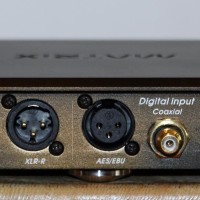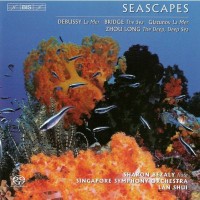Review by Mark Morris
- Matrix X-Sabre Audio DAC
- Yulong Sabre DA8 DAC with pre-amplifier and Class A Headphone amplifier
Both imported and sold exclusively by Grant Fidelity (www.grantfidelity.com) who supplied the review samples
Associated equipment used:
Pioneer DV-09 used as CD transport
Cambridge Audio Azur 650BD Blu-ray player
Cambridge Audio DAC Magic Plus
Home-built PC running Windows 8.1
Sonic Frontiers SFD-2 Mk III DAC
Sonic Frontiers Line 2 tube pre-amplifier
Sonic Frontiers Power 1 and Radford STA-15 MkIII power amplifiers
KEF 107 Reference loudspeakers
As I have continued my exploration of digital sources for Wall of Sound, I am beginning to be counted among the converted. We’ve probably all heard an audio lover claim that those high bit rate files are just so much hype. “96? 192? You just can’t hear the difference.” Well, you can, and perhaps for the first time since the advent of the CD digital sound quality is finally coming into its own.
So we are in a new and rather complex age. On the one hand we have the down-dumbing of audio quality for the mp3 mass market, exemplified, for example, by Bruce Springsteen’s more recent CDs, where the dynamic and frequency ranges have been massively compressed. At the other end of the spectrum we have increasingly superb studio-quality digital recordings available for download. Somewhere in the middle we have the music servers that are increasingly appearing in audio stores, where you rip your CDs (or download them), and have them all as files on a hard-drive. I can understand the convenience, but I am not convinced by the quality, at least not by those I have heard apart from the very expensive Meridian system.
Unfortunately, at the high-end we are currently in a shake-down period, with a bewildering array of different formats and different bit rates that make the famous Beta vs VHS arguments seem like child’s play. To DSD or PCM? 192 or 96? To asynchronous or not to asynchronous? Do you want to AIFF, ALAC, or FLAC? No wonder that so many of those who simply want to listen to music superbly reproduced, rather than wade through technical jargon, have been reluctant to embrace the new digital possibilities.
Nor has all the hardware kept up with the software: a FLAC 24/196 file of an average LP length will be around 1.8 gigabytes (to give a comparison, two LP-length albums will take up about the same hard-drive space as the entire basic Windows 8.1 operating system). Not only does that take an inordinately long time to download, but it limits how many you can store on a hard-drive. But download speeds will improve and hard-drives will become larger and cheaper, and one hopes there will eventually be a little more standardization.
With all this, the question of what comes between your digital source and your analogue equipment has become more complex and more urgent. For most music lovers, that means a DAC which has to be able to do a number of things. If you were compiling an ideal list of requirements, it has to be able physically to accommodate a CD player/transport, a DVD/Blu-ray player, and a USB source such as a computer or music server. Ideally, too, it should cover the range from 44.1 kHz (CD) to 196 kHz, or even, looking to the future, 384 kHz (i). If you are into headphones, it needs a headphone output, and a headphone amplifier with a volume control. If you are into home theatre, it needs a digital-through output to deliver to a processor. And, of course, you want sound quality that matches the rest of your audio system.
These musings have been prompted by living for some six weeks or so with two Chinese-made DACs that are the subject of this review. There are plenty of DACs in the sub $US800 dollar range; I was interested in the next level up, the $US1000-$1500 range, much less catered for. I had heard that the Chinese DACs based on the Sabre ESS9018 Sabre chip were punching above their weight, and Grant Fidelity, based here in Alberta in Calgary, kindly supplied me with two: the Matrix Audio X-Sabre ($US1099 – at the time of writing, $C1405), and the Yulong Sabre DA8 ($US1299, $C1661). Grant Fidelity exclusively import both the DACs, and sell them direct from their store in Calgary.
The specifications of the two units are almost identical, both supporting the full range from 16 to 32 bit, and from 44.1 kHz to 384 kHz, and both supporting DSD for SACD discs (the Matrix also supports DXD). Their sizes are pretty similar, the Yulong being the size of a fat hardback (9.75” x 8” x 3”), the Matrix a thin hardback (10” x 7.5” x 2”). Their finish is pretty similar, too, both very attractively finished in black aluminum (silver is available for both), in the Matrix’s case from a single solid block – long gone are the days when Chinese automatically meant cheap parts. I know, though, that the prejudice still lingers, but both these DACs feel like quality items. Both sit on well-thought out feet, the Matrix using inverted cones with an absorbent material at the tips, the Yulong with an interesting arrangement of what might be described as absorbent bubbles inside the conical legs. Both weigh quite a lot (the Matrix 8 lbs), and the rear connections are almost identical: high-quality gold plated analogue RCA outputs, balanced XLR analogue outputs, coaxial and AES/EBU digital inputs, the obligatory usb input, and in the Yulong, an optical digital input with a neat self-closing cover (no more losing those annoying little plugs).
From there, though, the philosophy differs. The Matrix, while very well finished indeed, still has something of the old-fashioned about it. Two little toggle-switches (reminding me of the kind you used to see on an MG dashboard) switch the power and the three sources, their minute labelling getting a little lost. A series of tiny LEDs indicate the signal lock, DSD, or PCM, and a further five lights show the current sampling rate, using rather a complex combination of lights that you either have to learn off by heart or look up in the manual. The absence of an optical input limits the versatility, and there is no headphone outlet. In other words, this is a bare bones DAC, clearly aimed at those who want to stream from their computer and hook-up a CD transport or player. Its small size makes it easy to associate with a computer, though it should be noted that both DACs run pretty warm (a consideration in stacks).
The Yulong is a more comprehensive unit. There’s a well-machined push power switch, a headphone socket and Class A headphone amplifier, and a beautifully smooth volume control either for the headphone or for the analogue outputs. The volume control and amplification can be switched completely out of circuit (almost all my listening was done by-passing it). A vertical row of four buttons controls the input, the switchable phase, a selections of filters, and jitter correction. In the centre of the front panel is an excellent, clear small screen, easily readable from a distance, showing the input and sample rate, the phase, the filter mode, whether the jitter eliminator is on or off, and, if the volume control is being used, the volume. It is very well thought out, and the attention to detail is gratifying: when you switch it on, the display is bright for enough time to set any requirements before then automatically diming to a sensible and not annoying level. I really liked the design and finish of this DAC.
It has to be said, though, that the number of inputs on both units are limited. My Cambridge Audio DAC Magic Plus (currently available at $C529 through amazon.ca), for example, has a similar philosophy to the Yulong, with a volume control and headphone output, and switchable filters. But also has two digital inputs in addition to the usb input, each of which can accommodate RCA and coaxial cables. And it has one feature I did miss in the two Chinese DACs: a digital output, allowing the input digital stream to be simultaneously put through to a processor (for, for example, multi-channel use) or to a digital recorder.
That said, both the Chinese DACs have the main features that most audiophiles will want, though it is noticeable that more DACs are now including a range of facilities, from remote controls to hdmi sockets, making them a kind of digital pre-centre: the NAD M70 ($C2200), which I heard recently, is a good example. In other words, these two Chinese DACs are aimed primarily at 2-channel audiophiles, who will hook up a CD transport and a computer to them. I could, though, see the Yulong being bought entirely as a headphone DAC/amplifier (I did not seriously test this application, as headphones are not my area, and I don’t own headphones of a quality that would do justice to the Yulong, apart from Stax electrostatics, which have to be run from a power amplifier).
That, of course, puts the emphasis on the sound quality. The more I hear different DACs, the more is seems to me that the most important parameter is digital ‘glare’. That sheen, the shininess on instruments and voices, has been with us from the first days of digital recording, and was notorious on some early CDs. Things have come a long way since then, but that ‘glare’, even if minimal and not instantly obvious, is largely responsible for the fatigue that so many have reported when listening to digital sources over a longer period (and, of course, has been one of the main differences between the sound of a good CD versus a good LP). In my experience, the amount of that sheen is generally inversely proportional to the cost of the DAC, if it has been well designed – the more you pay, the less you get.
The second most important parameter for me (though it may not be for everyone) is clarity and detail, for that is what digital potentially excels at – the minutest of detail against a completely soundless (‘black’) background. Lower priced DACs generally have some sort of compromise between the two. The Musical Paradise MP-D1, for example, which I reviewed for Wall of Sound, uses tubes to make the sound more ‘analogue’, but at the expense of detail. My DAC Magic Plus is good at clarity and detail, but has a touch of that ‘glare’, an edge, that does make it a little fatiguing over a long listening period. Then there are the usual criteria we would expect from any source: soundstage, timbre, balance across the frequency range, ‘attack’, and so on.
For this review I first broke in the Yulong for the recommended 150 hours, torturing it with non-stop repeats of a Springsteen CD (well, much though I love Springsteen, can you imagine listening to one of his CDs on endless repeat 24/7 for over 6 days?). The Matrix had already been broken in by Grant Fidelity. I then put almost everything through the two DACs over quite a long period: CDs, DVD sound, high-resolution files, and, using the USB inputs, the cricket World Cup commentary, multiple streams from the wonderful Naxos Music Library, a BBC play, opera streamed in high resolution from Switzerland… Music ranged from rock through classical and jazz to world music.
In other words, I wanted to see how they would fare in real life usage, when I could forget technical specifications and details, and live with them listening to a lot of music, both for pleasure and for my professional activities as a music critic. I ran both with upgraded power leads, and almost throughout used the XLR balanced outputs. For CD and DVD sources I used the coaxial input on the Matrix, and tried both the optical and coaxial inputs in the Yulong (without noticeable difference). For the asynchronous usb, I used their own drivers (downloaded from the Grant Fidelity web site) without problems, with rates up to 384 kHz – and my Windows 8.1 computer neatly recognized which DAC I had plugged in, adjusting accordingly. I primarily used VLC media player for the internet and stored files, but also tried foobar2000 with both units (ii). I briefly tried the Yulong’s different filters, but then stuck to the default setting. The jitter correction did not seem to make a difference with my main sources, but that will partly depend on individual systems.
The two units sounded very similar, perhaps reflecting the same basic chip set. So before discussing the differences, I’ll discuss their shared virtues. They excel at detail and clarity, especially at high frequencies, the percussion in ‘Cotton Avenue’ on Joni Mitchell’s Don Juan’s Reckless Daughter (Asylum 701-2) sounding just right, with sharp attack when appropriate. They were both well-balanced right across the frequency range, with a vibrant and clean bass that was perhaps a little more recessed than some DACs I have heard. Horizontal sound-stage and placement of instruments was excellent (a result of that clarity of detail), and back-to-front staging was good. The voices at the opening of the Decca Rhinegold (London 414 101-2) effectively emerged from different backstage areas, and the ringing sounds at the end of Dylan’s ‘Man in the Long Black Coat’ from Oh Mercy convincingly faded to the far distance, though in both cases I would rate the effect as ‘very good’ rather than ‘excellent’. Voices – spoken and sung – were natural, with a strong sense of presence.
Comparisons with Cambridge DAC Magic Plus confirmed that both the Chinese DACS were decidedly superior. There was none of the edge of the cheaper DAC, everything felt slightly sharper, and the overall impression was richer. Some pieces of equipment can sound marvellous on first hearing, but after time one starts to notice little imperfections. Neither the Matrix nor the Yulong were immediately ‘in-your-face’ startling: they both simply sounded very good. I listened to both of them for extended periods, firstly without fatigue, and second without any sense of those imperfections. In other words, they were indeed a noticeable and worthwhile improvement if I had been moving up to the next level from the DAC Magic Plus. With lower priced DACs I have always edged towards playing LPs out of preference. With these DACs I was more than happy to leave the turntable switched off.
That is not to say that either DAC was perfect, or that there were no differences between their sounds. The Matrix had a slightly harder edge than the Yulong, a very small touch of that glare, though not enough to be fatiguing or to overtly notice except in direct comparison. The Yulong had a fuller sound-stage, more air around instruments, and if the differences were small, they were consistent through all the different types of material I played. Overall, although the sound of the two units was so similar, I consistently preferred the more expensive Yulong.
Where both DACs came into their own was with 24/196 downloaded files. One weekend I had a hankering to listen to one of my favourite albums, Van Morrison’s Astral Weeks. I started with the original LP, and then played the CD – the sound of LP is superior to the CD, livelier, with more presence, but the CD is blissfully quiet compared to my old LP copy. With the sound fresh in my mind, I bought the 24/192 FLAC file from HD Sounds (and they are expensive, these hi-res files!). Played through either Chinese DAC, it was a revelation. The clarity, detail, and presence, the instrumental separation, the placing and the presence of Morrison’s voice, the attack of the guitars, simply far surpassed any issue of this album I have heard before. I had similar results with the 24/192 FLAC BIS recording of Debussy’s ‘Jeux de vagues’ from La Mer, played by the Singapore Symphony Orchestra conducted by Lan Shui, which I knew I could also stream in CD quality from the Naxos Music Library. A-B comparisons showed how superior the high bit rate files are: the CD sounded wonderful (as almost all BIS recordings do), but switching to the file was like seeing a loved oil painting fresh back from a professional cleaning: the colours sharper, a little haze of pollution lifted. Every audio lover should try to hear just how good digital can now be.
However, for any longer-term evaluation, it is always useful to have a reference, and for this I was kindly lent for the entire review period a rare DAC indeed: a Sonic Frontiers SFD-2 MkIII. It dates from the mid-2000s (to get one, you had to have a MkI or MkII rebuilt to the MkIII specification), uses tubes, and will accept up to 96 kHz. What it does have is one of the best sounds I have heard from any DAC. It is effortlessly natural, and, combined with my Pioneer Elite DV-09 used purely as a transport, is the first combination that really persuaded me that my Garrard 301 has met, if not its superior on the best recorded material, at least its digital equal.
Neither Chinese DAC could quite match it, in any parameter and across a number of sources. The sound stage was deeper, the subtle vibrancy of instruments more tangible, the space around them more palpable, a fuller bass with, for the example, the overtones of an electric bass guitar string just that much more resonant when struck. The Rheinmaidens in my Decca Rheingold CD are always difficult to reproduce correctly, and can sound edgy at the top of their range, and have on almost every system I have played it on. There was just a touch of that – though commendably little – with the Yulong, slightly more with the Matrix, but with the Sonic Frontiers it was, if not eradicated (it’s inherent in the 1958 recording), tamed in the most natural way. But we are talking here about a piece of equipment that was, in its time, in a completely different price range (a MkII originally cost $US5295, and the conversion to MkIII another $US1600 or so); a used one, if you can find it, will still cost considerably more than either of the DACs under review (iii). What impressed me about the two Chinese DACs, especially the Yulong, was that if they weren’t in quite the same league, they certainly weren’t embarrassed at all by the comparison. The danger of putting a piece of audio equipment against a much more esoteric comparison is that one can end up being dissatisfied with the more modest item, and end up wanting to constantly switch back to the superior one. This was not the case here, especially with the Yulong: if I preferred the Sonic Frontiers, the virtues and overall balance of these Sabre DACs are strong enough to accept the comparative limitations.
For anyone wanting to move up from a sub-$US800 DAC – or for anyone wanting to go straight into digital a something more than an entry or budget level – both these Chinese DACs are well worth considering. I came to the conclusion that the Yulong was, in the end, worth the extra over the Matrix, for the extra facilities, and for that slightly superior sound. If I wasn’t going for anything esoteric, I could more than happily live with it in my system, knowing that it would cope with all my digital sources while giving me really rewarding sound quality, without my feeling I would want to upgrade it in the foreseeable future.
However, with that said, potential Canadian buyers – and one must feel for Grant Fidelity on this, too, as they are buying and selling in US dollars – have been somewhat hammered by the rapid fall in the Canadian dollar. When, only a few months ago, the Matrix was around $C1100, and the Yulong $C1300, they both represented very good value for money indeed. With current exchange rates, that price advantage has been eroded, and in writing this review I was conscious that the Yulong in particular is nudging towards the next, $C2000+ range. Of course, a lot of rival equipment is also affected by that falling exchange rate, but for Canadians, the very well regarded Canadian Bryston DACs (the BD-1 and BD-2, in the $2000-$2500 range), which I haven’t yet heard, are not. Grant Fidelity are, at the time of writing, offering both the Chinese Sabre units at 10% off retail, which helps, and prospective buyers should note that each time the Canadian dollar goes up these two Sabre-based DACs also increase in value for money.
Both these DACs exemplify how very good digital sound can now be, without breaking the bank, and are a reminder – if we now needed one – how very good some Chinese equipment has now become. The Yulong, in particular, gave real musical pleasure over extended periods of listening, and for those few weeks became a happy fixture in my main listening system.
[i] Sources are few and far between. I had been able to listen to BBC Radio 3’s 320 KHz classical music broadcasts, but unfortunately the BBC ceased broadcasting them before this review.
[ii] A note for anyone new to USB streaming using Windows. The drivers themselves will not set the output rate – the default is 44.1 kHz (CD quality). You have to go to the properties of the audio driver; the DAC’s instructions should show you how to do this. However, the initial dropdown dialogue – on my Windows 8.1 at least – does not have the option for maximum of 384 kHz, but is limited to 192. However, the advanced properties – which is actually the setting that determines the maximum allowed through – does have that option, and you can set it there. Both these DACs then confirmed a rate of 384 kHz.
[iii] I did rig my system to play the 24/192 kHz Astral Weeks through the Sonic Frontiers at 96 kHz. I still preferred the musicality, the sound-stage, and the sense of presence of the Sonic Frontiers to the Yulong at 192 kHz, but in sheer absolute detail, the last ounce of clarity, I think the Yulong at 192 kHz probably just had the edge.
[views]

